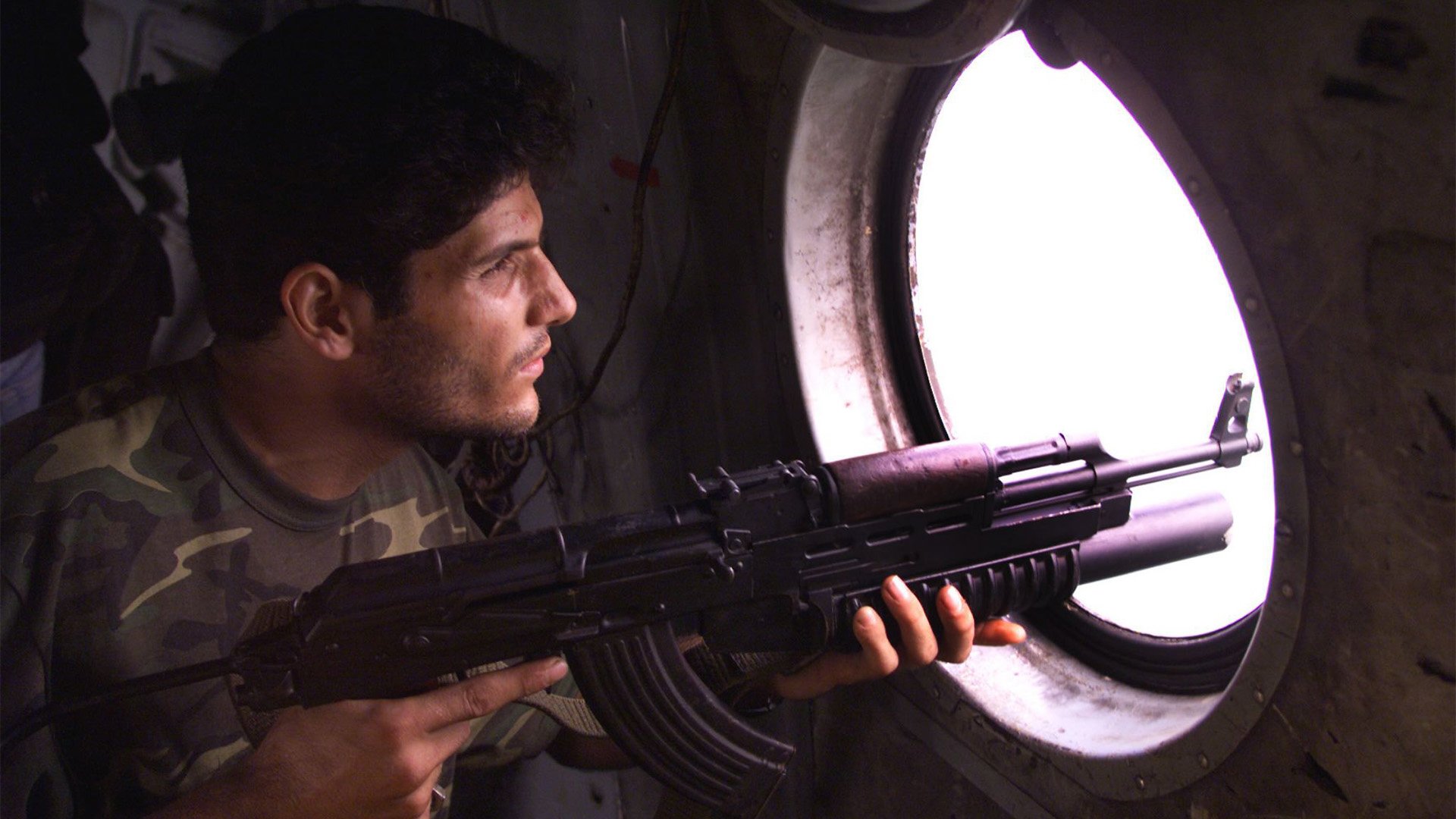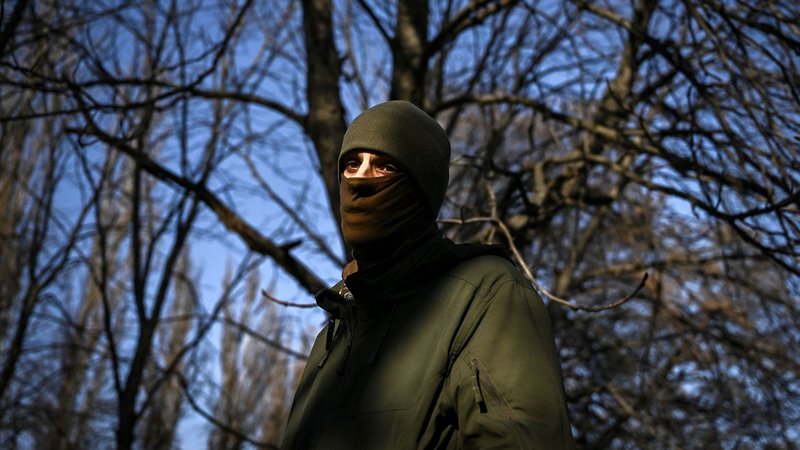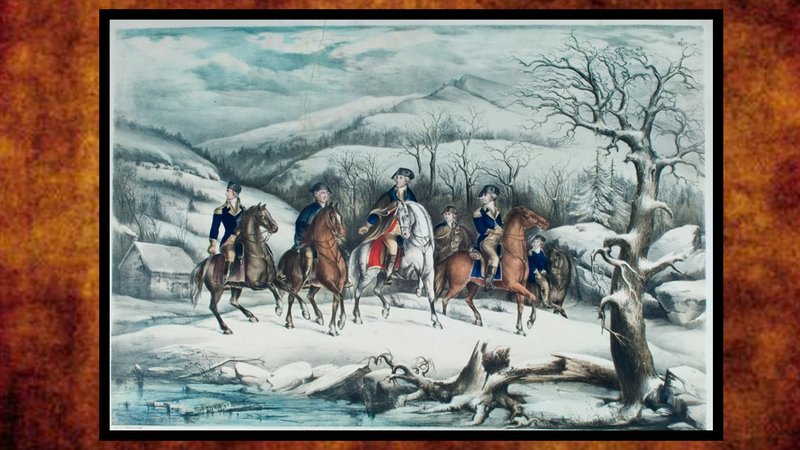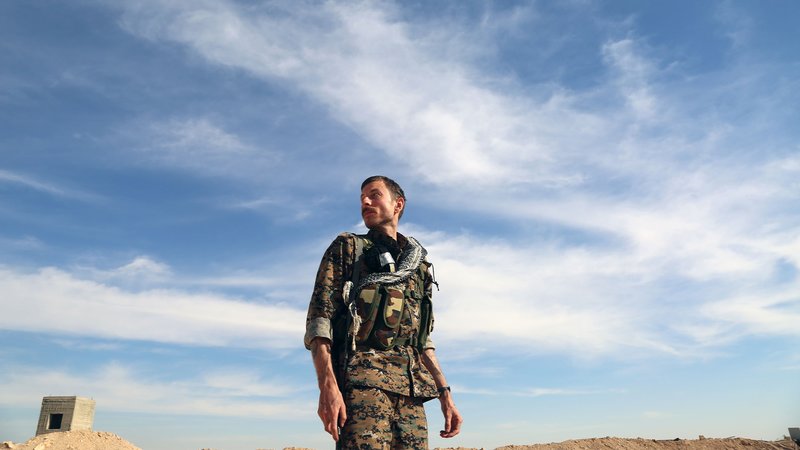
A mercenary linked to a Nigerian intervention force holds his AK-47 rifle pointed towards Freetown, the capital of Sierra Leone, on Jan. 7, 1999. Fighting had been raging between the rebels and government forces for past two days, a battle that included foreign fighters drawn to the conflict for pay, adventure, or ideology. Photo by Jean-Philippe Ksaizek/AFP via Getty Images.
When veterans of the wars in Afghanistan and Iraq see the term “foreign fighter,” we often think of the waves of destruction caused by Salafist jihadis who came from across the globe to fight alongside their co-religionists to violently advance their particular conceptions of Islam.
As someone who served in and around the northern Iraqi city of Tal Afar in 2006-07, my first thought about the concept revolves around the March 27, 2007, dual vehicle-borne improvised explosive device truck bombs that killed 152 people and wounded 347 others.
The women, children, and men who became casualties in this market attack were targeted by Yemeni foreign fighters simply for being Shiite, followers of a sect of Islam. The men who spilled the blood of these victims had traveled nearly 2,000 miles.
But the concept of foreign fighters is not a new phenomenon introduced since the 2000s. And it’s not within the sole domain of Islamic militants.

French volunteer fighter Pierre poses in a park in the Ukrainian capital Kyiv on March 19, 2022. Pierre, 28, says he spent four years as a volunteer fighter in Syria. Now he is preparing to return to a foreign front again, this time in Ukraine. The construction worker, who declines to give his full name, was at home in France when Russia invaded its neighbor on Feb. 24. Photo by Aris Messinis/AFP via Getty Images.
What Are Foreign Fighters?
While there are many definitions of “foreign fighters,” the easiest way to think about them is to imagine volunteers who go abroad to fight in the conflicts of states where they are not citizens.
Think of heroes of the American Revolution, such as the French-born Marie-Joseph Paul Yves Roch Gilbert du Motier (Lafayette) and Pierre Charles L’Enfant; the Prussian-born Baron Friedrich Wilhelm Augustus von Steuben; and the Polish-born Tadeusz (Thaddeus) Kościuszko.
Americans also went abroad to help Texas secede from Mexico in 1835-36. They flocked to France and other nations before the US government officially entered World Wars I and II. They fought in the Abraham Lincoln Brigade during the Spanish Civil War. And some Americans ventured to Soviet-occupied Afghanistan in the 1980s.
Volunteers are motivated to become foreign fighters for many reasons. Some may go abroad to fight for action or adventure, or for an escape from their daily ennui.

"Washington and His Staff at Valley Forge," an 1855 chromolithograph by Edward Moran based on a painting by Veron Fletcher, depicts George Washington, the Marquis de Lafayette, Nathanel Greene, and Anthony Wayne, at Valley Forge, Pennsylvania, during the winter of 1777-1778. The Marquis de Lafayette was a French volunteer to America's revolutionary cause. The image is now in the Harry T. Peters "America on Stone" Lithography Collection of the National Museum of American History.
Others might join organizations such as the French Foreign Legion to earn French citizenship. Still others might wage war for private security companies for pay.
But the issue of transnational identity has historically been a key factor in drawing volunteers to internal conflicts. Such transnational identity could be based was especially concerning for those nations’ counter-terrorism officials. They feared the networking, training, and combat experience gained inside the Islamic State would spread worldwide when the surviving fighters flowed back out.
The US and our allies and partners helped push back the advances of ISIS. Concern then shifted in Washington to a strategic competition with Russia the invasion, and over 15,000 volunteers have joined the fight to defend that country.
The motivation for most of these volunteers, who are told to arrive with their own personal protective equipment, seems to be to stand up for a democratic government in the face of Russian aggression.
As Ukraine has attempted to vet these volunteers for prior combat experience, the hope is that their service to Kyiv won’t create the sorts of foreign fighter outflow problems that previous conflicts have caused.

An American volunteer in the Syrian Democratic Forces, a US-backed Kurdish-Arab alliance, looks on in the village of Abu al-Ilaj, near the Syrian town of Ain Issa, 30 miles north of Raqa, the Islamic State group's de facto Syrian capital, after the SDF alliance launched an offensve to retake the IS stronghold, on Nov. 7, 2016. Photo by Delil Souleiman/AFP via Getty Images.
What Comes Next?
The wars in Syria, Iraq, and Ukraine point to our continued concern over the foreign fighter phenomenon.
Many veterans of such conflicts will need to be monitored by intelligence and law enforcement communities worldwide.
While some foreign fighters become disillusioned after their wars, others seem to get addicted to the action. This is particularly concerning when thinking about both Salafist veterans and those engaged in white identity militarism.
Their motivations may be different, but their ability to radicalize and recruit others will require our vigilance.
--
This article first appeared in the Summer 2022 print edition of The Forward Observer, a special publication from Coffee or Die Magazine, as “Foreign Fighters.”
Read Next: Dispatch From Syria: Democratic Forces Prepare for Turkish Invasion

Michael P. Noonan, Ph.D., is a veteran of Operation Iraqi Freedom, the author of Irregular Soldiers and Rebellious States, and a senior fellow of the Foreign Policy Research Institute.
BRCC and Bad Moon Print Press team up for an exclusive, limited-edition T-shirt design!
BRCC partners with Team Room Design for an exclusive T-shirt release!
Thirty Seconds Out has partnered with BRCC for an exclusive shirt design invoking the God of Winter.
Lucas O'Hara of Grizzly Forge has teamed up with BRCC for a badass, exclusive Shirt Club T-shirt design featuring his most popular knife and tiomahawk.
Coffee or Die sits down with one of the graphic designers behind Black Rifle Coffee's signature look and vibe.
Biden will award the Medal of Honor to a Vietnam War Army helicopter pilot who risked his life to save a reconnaissance team from almost certain death.
Ever wonder how much Jack Mandaville would f*ck sh*t up if he went back in time? The American Revolution didn't even see him coming.
A nearly 200-year-old West Point time capsule that at first appeared to yield little more than dust contains hidden treasure, the US Military Academy said.












